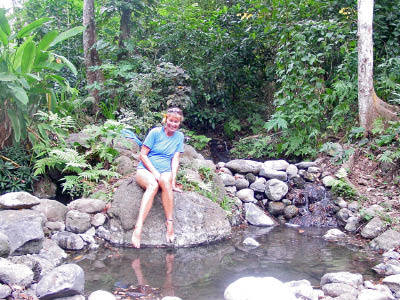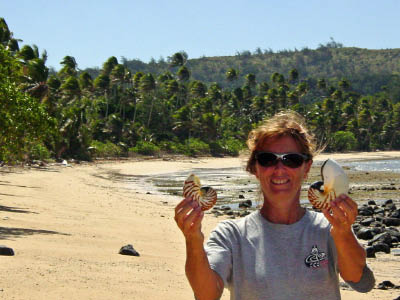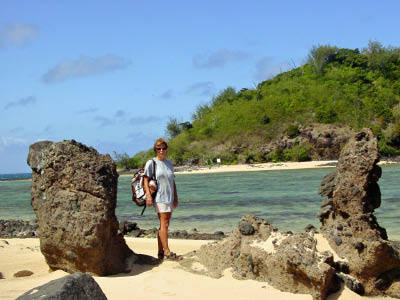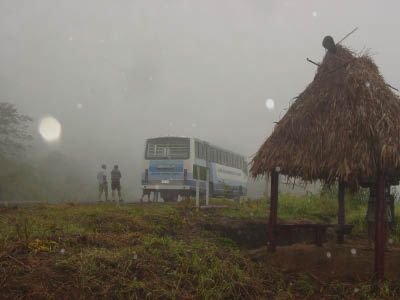|
|
 VANUA LEVU AND TAVEUNI |
|
The northern island of Vanua Levu and Taveuni are known as the "real" Fiji. Savusavu and Labasa have 5000 and 25,000 people respectively. The other centres are small villages with little or no public facilities. Our main stops were at Nananu-I-Ra, Yadua Island, Savusavu, Fawn Harbour, Viani Bay, Taveuni, Makogai and Naigani. |
 |
 |
 |
|
July 29 Shari (Babalona) is trained in bio-mechanics of the feet. She is a sport's therapist and offered to help me with the foot problem I have been having since the Marquesas. She actually gave my condition a name...Sesamoiditis. After watching my gait and examining my feet and x-rays, she built me some orthopedic insoles for my sandals. They are so comfortable and it's nice to know that the prognosis is not what I had accepted as constant foot pain after all. |
|
|
July 31 - August 1 Our crossing to Yadua Island was very rough and the visibility was extremely bad. It was difficult to see the reefs bordering the pass and we came uncomfortably close to a dangerous situation as a result. The wind was on our nose (again) and the seas high and confused. |
|
|
We arrived at Yadua and anchored in Cukuvou Harbor. The bay is protected by a surrounding reef and we immediately felt the boat settle into a secure sand bottom holding. We were the only ones in the anchorage and there were no signs of habitation on land. There were however, ruminants of what we thought was a tiny fishing camp. We later found out that the locals often organize here to harvest sea cucumbers for the Japanese Market. The huge worms bring top dollar ($10 ea) for the Fijians. Unfortunately the Europeans have supplied the local villages with second rate scuba equipment without the proper training, in hopes to collect a bounty of sea cucumbers. As a result many Fijians die each year because of their lack of knowledge of dive tables, etc. |
|
|
Protected anchorage at Yadua |
|
|
Windy Anchorage We were unable to get weather info by email but the wind was still blowing strong so we stayed with the boat all day. |
|
|
|
||||
|
|
Too Hot Hot Pools We walked down the road to the plantation where we got permission to visit the Hot Pools. A nice young Fijian boy guided us to the trail and we walked through a bamboo forest, over the creek and finally found a series of pools. |
 |
 |
|
 |
One was too hot to even put my feet in, another warm and another cool, before the water cascaded into the creek. It was a delightful spot. |
All around the pools there were beautiful flowers including wild ginger and bird of paradise |
||
|
Before we returned to our boat, we were loaded
up with fresh lettuce, herbs and fruit picked
right out of the garden. I also got a great
recipe for cooking green papayas. |
||||
|
next.....VIANI BAY>>>>> |
||||




























